There it sat. I couldn’t help but notice a smallish orange that I had zested to perfume a batch of Negronis and afterward returned to my fruit bowl. It must have been there for at least a week between shopping days. I picked it up, ready to add it to the compost bin, and then felt it resting heavily in my hand, demanding attention. The skin had hardened but otherwise, there was no other sign of degradation. The oil “glands” that lock in the essential perfume of the fruit and which I had grazed with the zesting knife, pocked the surface. This now strange object left ignored, appeared beautifully transformed. I could only imagine what I might find by slicing it in two.
My enthusiasm for citrus often outdoes my family’s ability to eat all I’ve bought. if I run over and ignore them, they will ferment in their skins. Or the invisible microbial community in my kitchen will bloom fantastic colonies of white or blue/green molds. Penicillium thrives on aging citrus and is the species I cultivate on the surface of ripening and aging salame. In contrast to mold that protects salame from light and oxidation and aids in the drying of fermented meat, its proliferation on the surface of citrus signals rapid decay. Some citrus, however, especially the smaller mandarins and tangerines survive and appear immune to rot under the right conditions. They simply dry out, shrivel, and greatly intensify. These are worth waiting for. Yet, there is no simple method I can offer to ensure this welcome phenomenon. Ambient conditions play a major role. So does the native quality of the fruit, its moisture content, the thickness of the skin, and inherent acidity. Since my encounter with the overlooked orange (a Sicilian variety, Tarocco, with mottled orange-red flash) and similar experiences with fruit I have peeled, put aside, and forgotten, I have been tracking humidity and temperature in my kitchen. This may sound insane, if it were not for the fact that fermenting and drying meat is a high art and the lessons learned from the one process apply to other foods, if not equally. A salame is made up primarily of water in the raw state and is perfectly dry when it loses about 40% of its water weight and the surface is as supple as the interior. Suppose the skin of a salame (traditionally the intestine of pork or beef) dries faster than water can move from the center to the surface and evaporate. In that case, a condition called “crusting” or “case hardening” occurs as a defect that can lead to unevenness in the bite, a soft center, or worse, decay. if I were to think much about it, I would not use the same principle to dry an orange or a mandarin But what appears to have happened is that the Tarocco orange's scarred skin allowed water to escape via the soft white pulp and the channels of the opened oil glands. Then as the orange gradually and progressively dried, the skin toughened up locking in the concentrated juice. Intensely delicious!
Ideal conditions, verified by the readings I took in my kitchen, are an average relative humidity of 50% and temperature in the 65-72 F range. In other words, the climate of most houses. You don’t need to do anything but start with a scraped orange or a small skin-on or peeled mandarin, the fresher the better.
If you peel the fruit first and section it, drying happens much faster and. I have done this with December clementines, the exquisite Satsuma and mid and late-season “Dancy” and “Pixie” tangerines from Ojai in southern California. They are easy to peel and relatively quick and predictable to dry, whole, or broken into segments. The same goes for orange segments.
I was reminded of MFK Fisher’s similar revelation in a personal reflection from her masterpiece, Serve It Forth. I don’t think she’d have minded if I excerpted all but her relevant process:
“...It was then that I discovered little dried sections of tangerine. My pleasure in them is subtle and voluptuous and quite inexplicable. I can only write how they are prepared.
In the morning, in the soft sultry chamber, sit in the window peeling tangerines, three or four. Peel them gently; do not bruise them…
…tear delicately from the soft pile of sections each velvet string. You know those white pulpy strings that hold tangerines into their skins? Tear them off. Be careful.
Take yesterday's paper and spread it on top of the radiator.
After you have put the pieces of tangerine on paper on the hot radiator, it is best to forget about them. On the radiator, the sections of tangerines have grown even plumper, hot and full. You carry them to the window, pull it open, and leave them for a few minutes on the packed snow of the sill. They are ready.
The sections of the tangerine are gone, and I cannot tell you why they are so magical. Perhaps it is that little shell, thin as one layer of enamel on a Chinese bowl, that crackles so tinily, so ultimately under your teeth. Or the rush of cold pulp just after it. Or the perfume. I cannot tell.
Serve it Forth (Borderland)




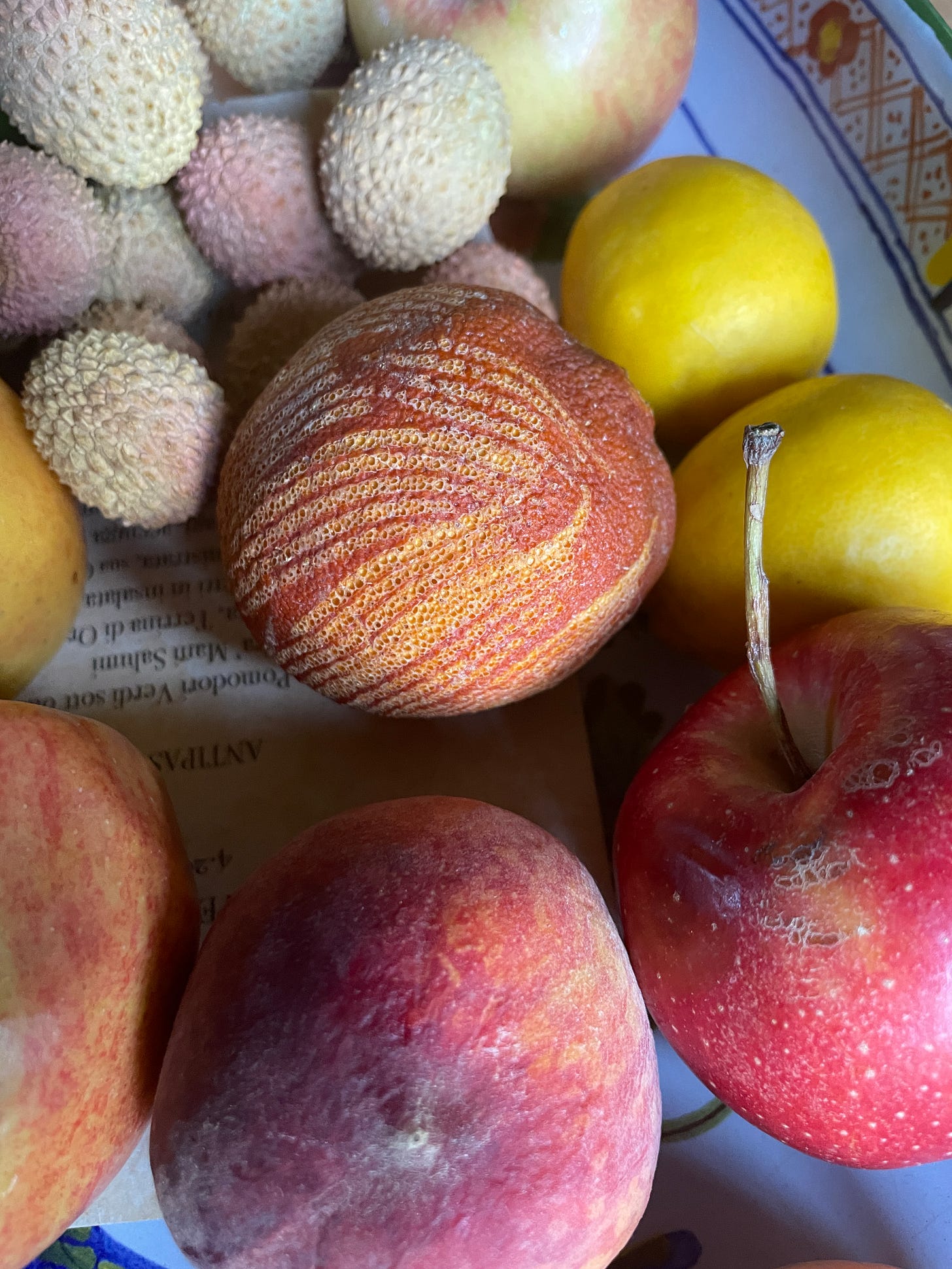
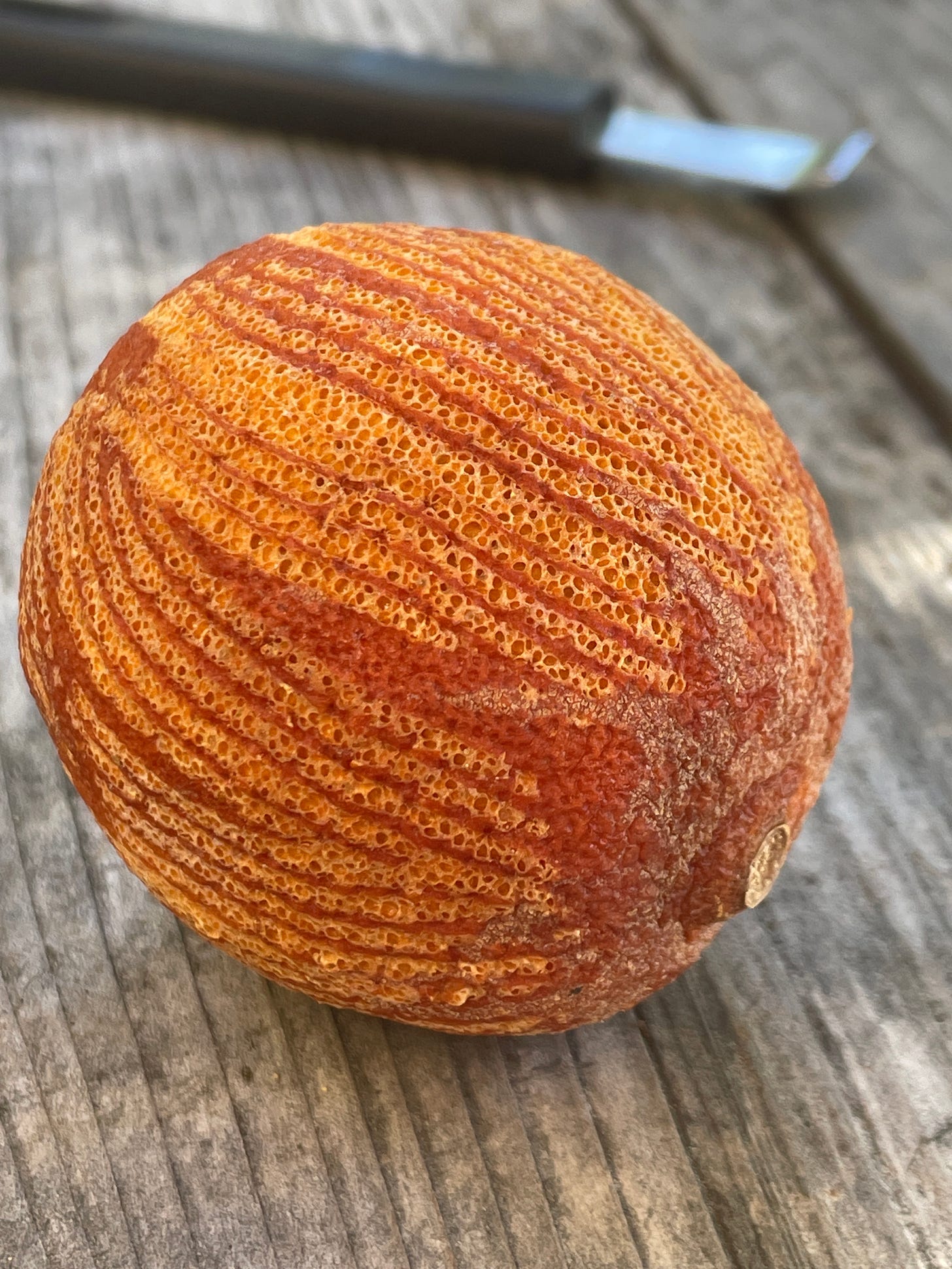
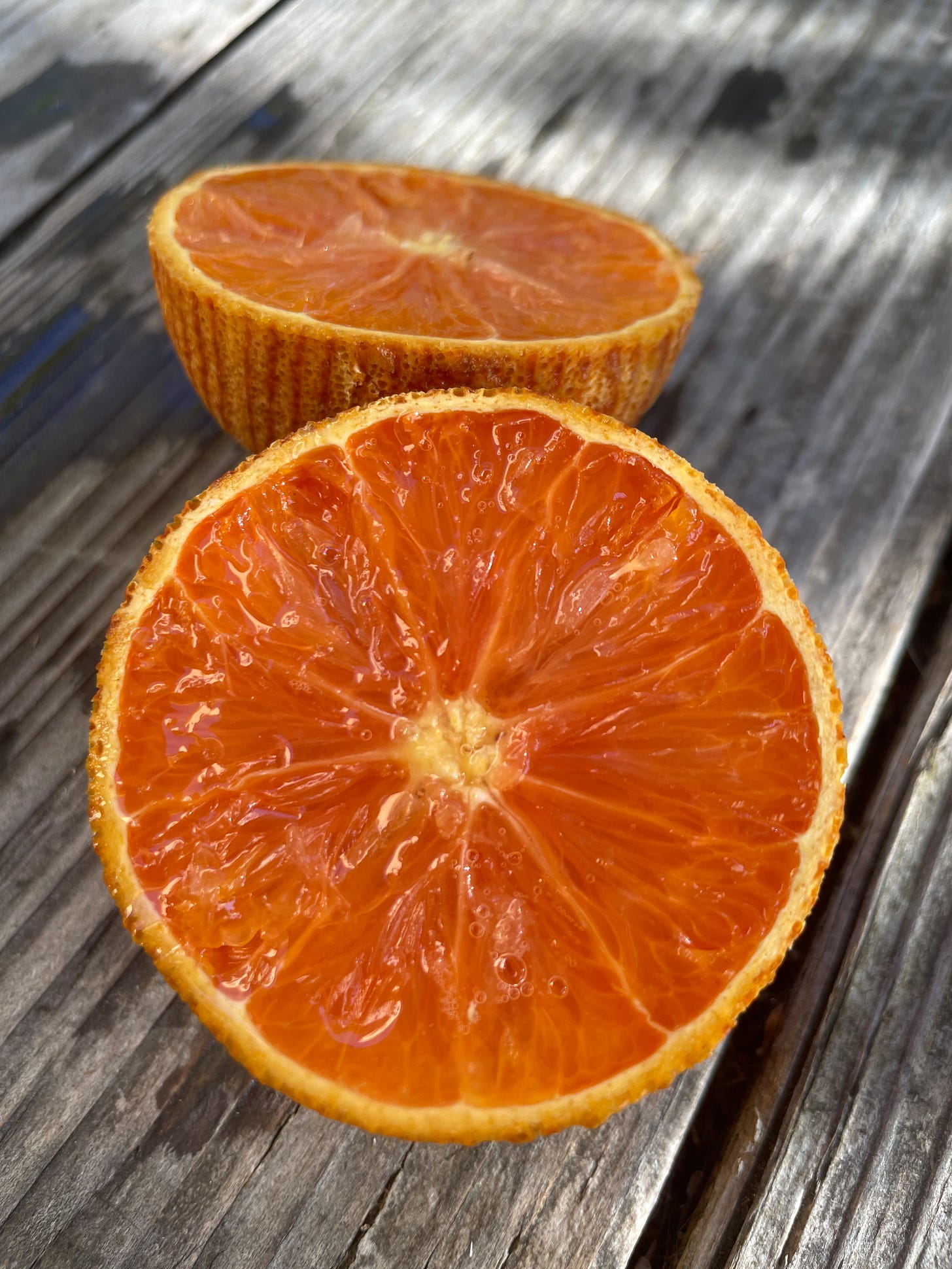
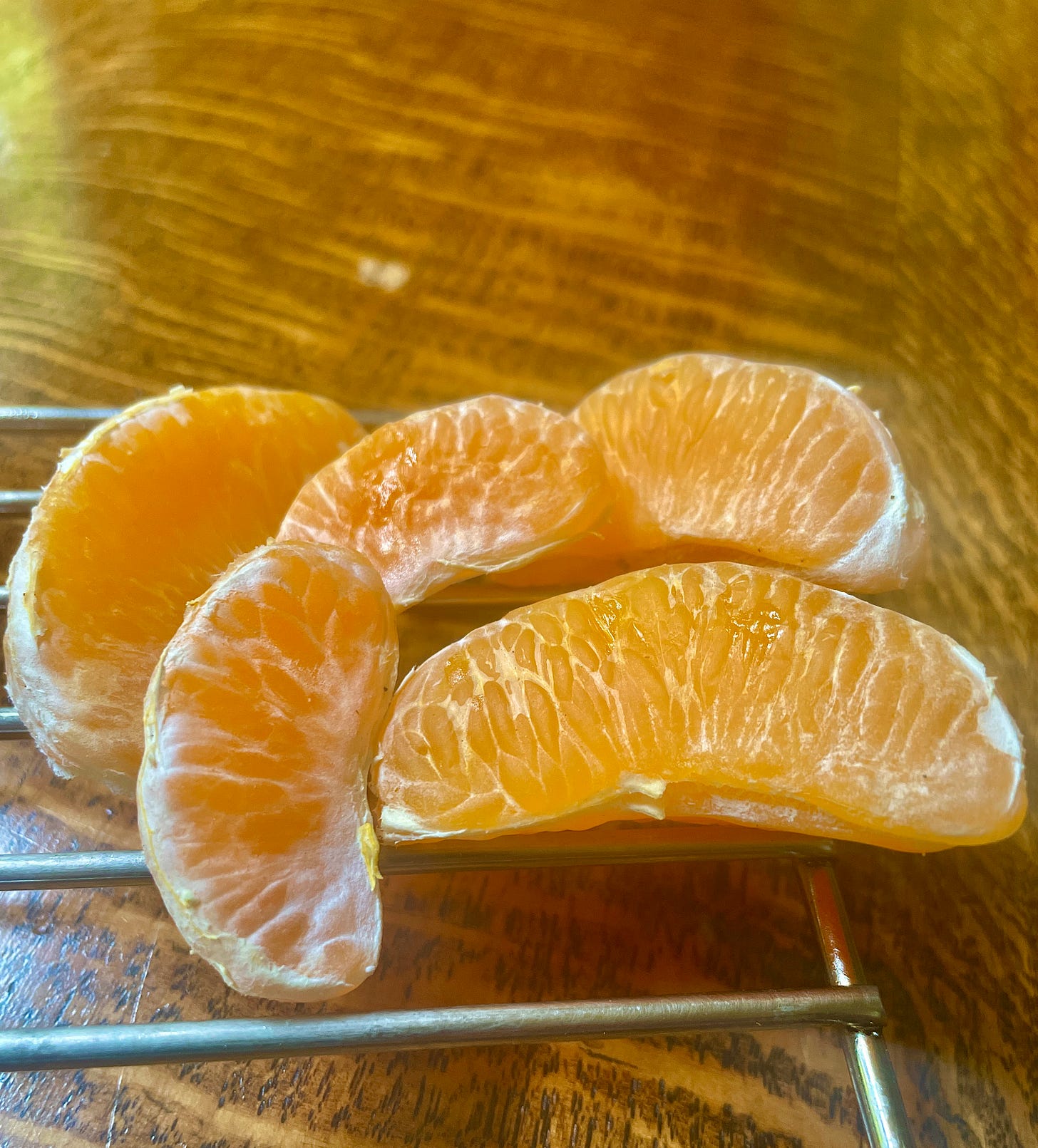
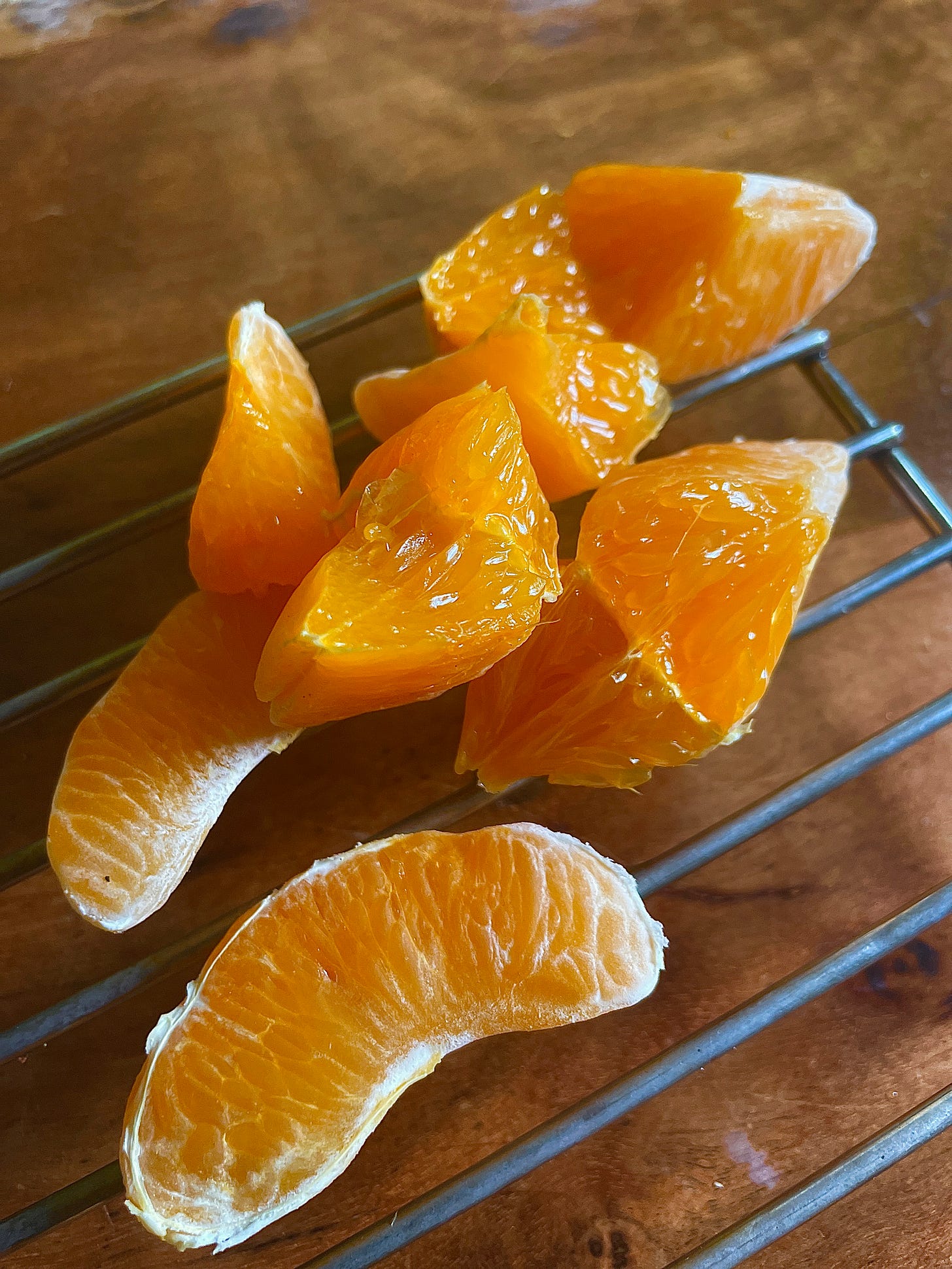
What a remarkable piece of writing--about texture, taste, smell, sight, all pulled together in a statement fully as voluptuous as Fisher's. Thank you for these delicious observations, Paul!